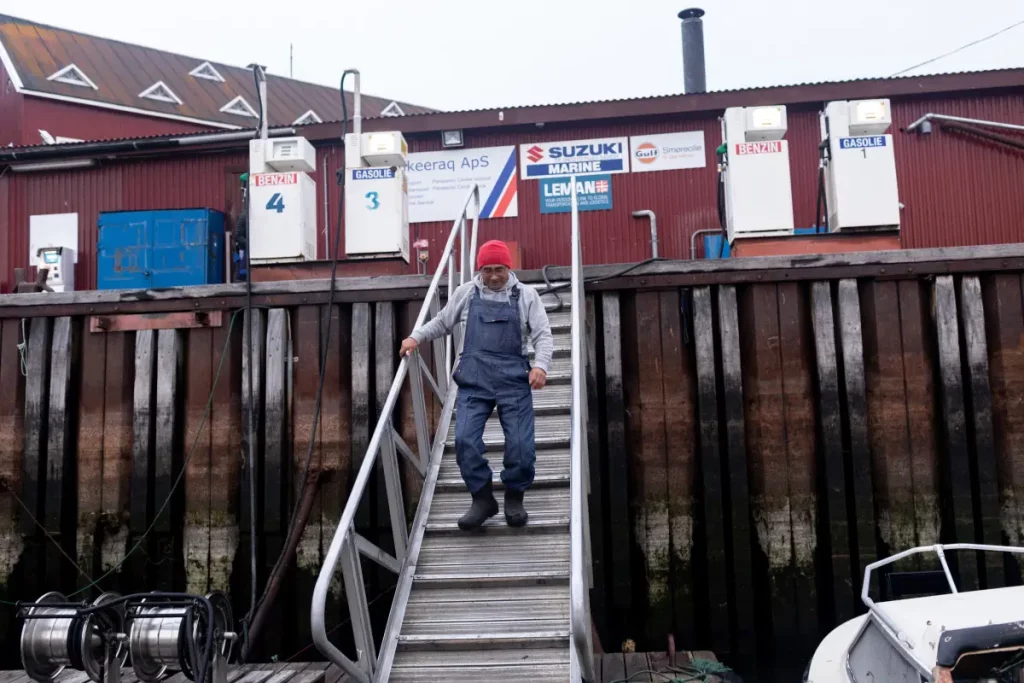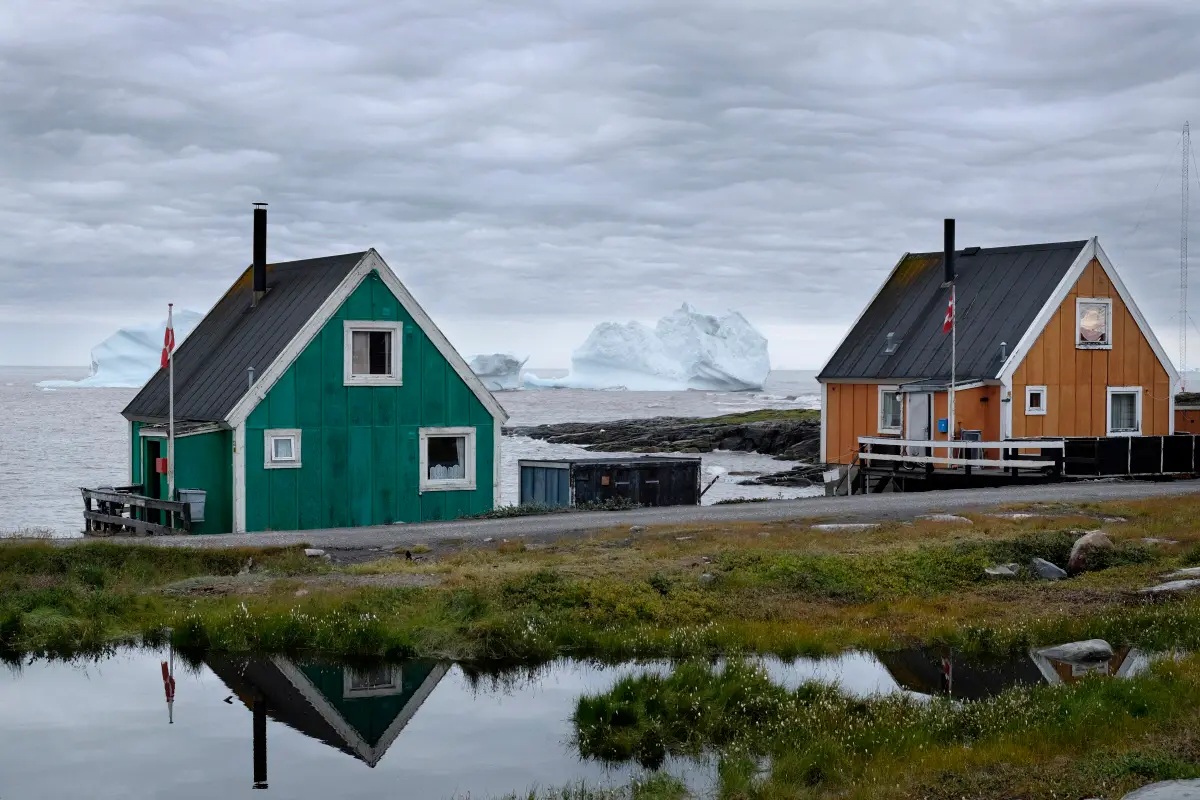Science news – new studies show us the effects of anthropogenic global warming on the Greenland Ice Sheet, right now and in the future, highlighting the value of climate action
Oceans preservation: The Greenland ice sheet (GrIS) is experiencing melting as never before
As anthropogenic global warming has affected global surface temperatures, the Greenland ice sheet (GrIS) is experiencing melting it hasn’t seen in the last 350 years. The ramification of this phenomenon affecting the GrIS spans way beyond the two oceans surrounding the island it lays upon, as it rings alarm bells on a global scale due to its influence on sea-level rise (SLR).
This makes it urgent to investigate the GrIS’s potential future trajectories under various emission scenarios. These trajectories are what the paper Overshooting the critical threshold for the Greenland ice sheet (Bochow, N., Poltronieri, Bochow, N., Poltronieri, A., Robinson, A., et al., 2023) published on 18 October 2023 in the scientific journal aimed to analyze. Lead by an international team from the Arctic University of Norway (UiT) of Tromsø, Norway, the Potsdam Institute for Climate Impact Research (PIK) of Potsdam, Germany, the Complutense University of Madrid, has found that the Greenland ice sheet might be more resilient to warming temperatures than previously assumed, making a potential reversal of global warming enough to stop the Greenland ice sheet tipping potentially.
Still, even a temporary overshoot of the temperature threshold would worsen the issue of sea-level rise. «We found that the ice sheet reacts so slowly to human-made warming that reversing the current warming trend by cutting greenhouse gas emissions within centuries may prevent it from tipping. Yet, also just temporarily overshooting the temperature thresholds can still lead to a peak in sea level rise of more than a meter in our simulations», said co-author Niklas Boers from PIK, Professor of Earth System Modelling at the Technical University of Munich.
Are the ice caps in Greenland melting? Glaciers and Climate action solutions
In the Icelandic saga the Saga of Erik the Red (Eiríks saga rauða), the Norse explorer Erik the Red established a settlement of Icelandic farmers in 985 on the west coast of Greenland, where the Saqqaq and Independence Peoples had come around 4,500 years ago, and decided to call it Greenland to attract other Vikings settlers to the island. «In the summer Eirik went to live in the land which he had discovered, and which he called Greenland, ‘Because’, he said, ‘men will desire much more to go there if the land has a good name’».
Despite its English name, eighty-one percent of Kalaallit Nunaat, as the arctic country is called in Kalaallisut (West Greenlandic), the island’s official language, is covered by a mass of ice taking eighty percent of its surface. This body of land ice spans over 1.7 million square kilometers, making the Greenland Ice Sheet the world’s second.
This ice sheet has changed over the past ten years, exhibiting significant thinning along its borders, accelerating outlet glaciers, and an overall increase in mass loss. Speaking about oceans preservation , the Greenland ice sheet is the primary cause of sea level rise from ice caps melting, with the ice sheet releasing over 300 gigatons of ice caps into the ocean a year, the second largest contributor after ocean thermal expansion as a whole.
Like the Amazon rainforest, the El Niño-Southern Oscillation, and the Tropical Coral Reef, The Greenland Ice sheet is one of the several Climate Tipping Points, parts of the Earth’s system exposed to critical thresholds that, once exceeded, can bring about a reorganization of the system.
Is Greenland losing more ice caps than Antarctica?
The majority of Antarctica and Greenland is covered by polar ice sheets, which contain sixty-eight percent of the freshwater resources in the world. According to the European Union’s (EU) earth observation program Copernicus, the Greenland ice sheet shed 108 Gt of ice annually between 1972 and 2021, raising the sea level by fourteen-point-nine mm.
The Antarctic ice sheet instead has lost 114 Gt of ice caps per year between 1979 and 2021, increasing sea levels by thirteen-point-seven mm. The Antarctic and Greenland ice sheets lost 425 gigatonnes (Gt) of ice together in 2021.

What would happen if the Greenland ice cap melted?
The Greenland ice sheet would raise the global mean sea level by 7.4 ± 0.05 m and the Antarctic ice sheet by 57.9 ± 0.9 m if these ice sheets melted in their entirety. An estimated six million people worldwide are at risk of coastal flooding for every centimeter that sea levels rise.
The melting of the Greenland ice sheet, which is located in a region affected by a phenomenon known as Arctic amplification, which makes the area warm faster than the rest of the world, in addition to leading to a worsening of sea level rise, could impact the Atlantic Meridional Overturning Circulation (AMOC). The AMOC may become less potent or destabilized due to North Atlantic freshening brought on by a melting GrIS.
Science answers – How does the Greenland ice sheet react to human-made warming?
The scientists used two separate ice sheet models, the new version of the Parallel Ice Sheet Model (PISM) and the ice-sheet model Yelmo, to run a variety of scenarios. In these model runs, up until the year 2100, the global mean temperature increased by up to six-five degrees over pre-industrial levels in each model run.
Following this, temperatures decreased progressively across a variety of time periods, ranging from 100 to 10,000 years. «We investigated how the Greenland ice sheet might react over centuries to millennia to the drastic and rapid, yet so far still comparably short-lived warming of our time», lead author Nils Bochow, from the PIK and Doctoral Research Fellow at UiT’s Department of Mathematics and Statistics said in a PIK press release.
The study results – climate action solutions and climate change science
According to the study’s estimates, even if global mean temperatures ‘overshoot’ by 2100, reaching a peak of roughly six-point-five degrees above pre-industrial levels, a cooling trend within a few centuries might still be able to stop the ice sheet from completely collapsing and causing sea levels to rise.
In addition, the findings from this support earlier research regarding the long-term critical temperature threshold of between one-point-seven and two-three degrees Celsius, which could result in a near-total melting of the GrIS over hundreds or thousands of years and a potential seven-meter rise in sea level worldwide. Based on the models used, one-point-seven degrees of global warming might be a safe threshold below which the GrIS would not tip.
Fighting climate change – Oceans preservation and the need to stay below one-point-five or two degrees Celsius of global warming
These findings uphold the need for speedy climate action solutions to preserve this ice sheet, the other Climate Tipping Points, and the people whose well-being would be endangered by their tipping, as not only the worse global warming gets, the harder it will be to bring the temperatures back to safe levels, but even frictional temperature increases lead to climate risks faced by people.
While the ice sheet might respond slowly to anthropogenic warming, other parts of the climate system don’t behave the same under warmer temperatures. The weather patterns, the rainforests, and the oceans preservation systems react faster, reducing the time available for climate action solutions.
«Our results underline that even if we do not manage to stay below 1.5 or 2 degrees of global warming within the coming decades, and temporarily cross the critical temperature threshold of the Greenland ice sheet, we still have a chance to act», says Nils Bochow.
«And even when avoiding a large-scale tipping of the Greenland ice sheet, temporary sea-level rise can be substantial. The higher temperatures rise, the more difficult it will be to bring them down to safe levels in the long term. This is why we need to act fast and keep global mean temperatures below 1.5 degrees Celsius», explains Boers.«The Greenland ice sheet is just a small part of the picture and there are many other negative consequences related to human made climate change that we might face if we don’t act in time».
Nature Communications, North Greenland
The team of scientists behind a study published 07 November 2023 in Nature Communications has investigated the evolution of the ice shelves in North Greenland, which on their own hold enough ice to increase sea level by two-point-one meters.
The scientists from the Université Grenoble Alpes, San José State University, the GEUS, and the University of Copenhagen used satellite data, field measurements, and aerial images integrated with a regional climate action solutions model to assess the behavior of the glaciers in this region. Their work has revealed that these ice shelves, which were previously thought to be stable, are undergoing a weakening process and experiencing increased ice discharge. When it comes to keeping people safe from sea level rise, time is of the essence. It’s a matter of oceans preservation.
Potsdam Institute for Climate Impact Research (PIK)
The Potsdam Institute for Climate Impact Research (PIK) is an interdisciplinary climate impact research institute located in Potsdam, Germany. This non-profit organization and member of the Leibniz Association was founded in 1992 and it has 400 staff members from all over the globe.



















